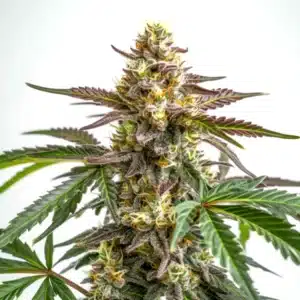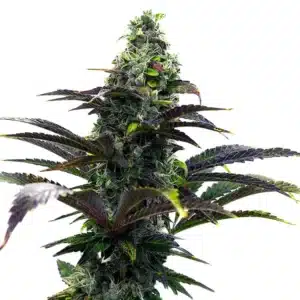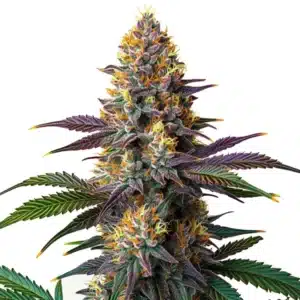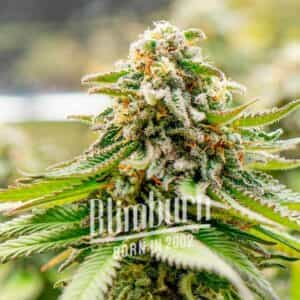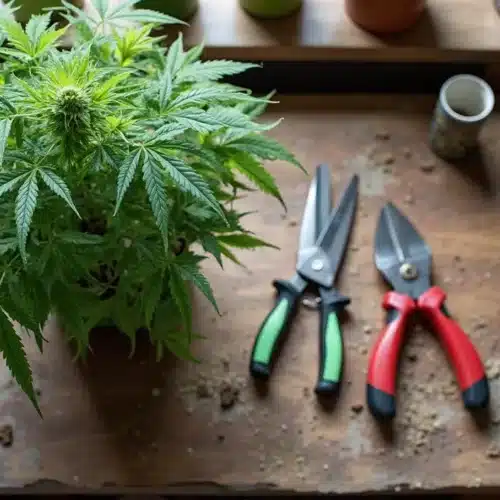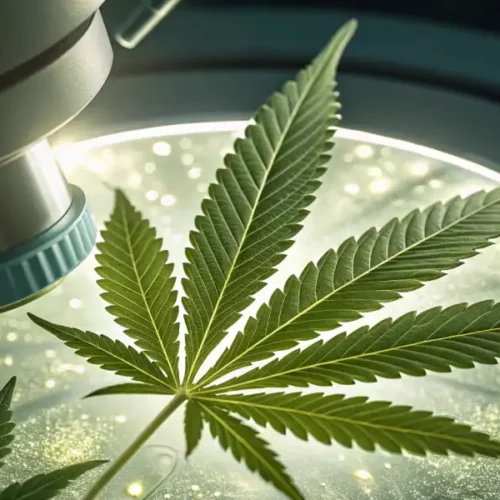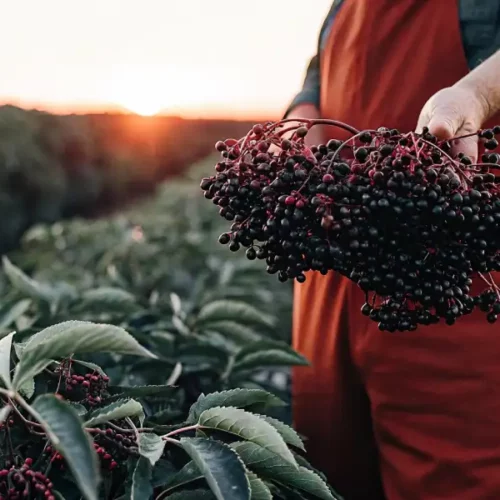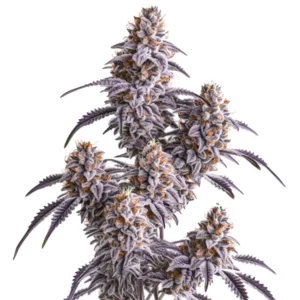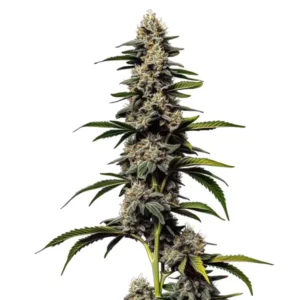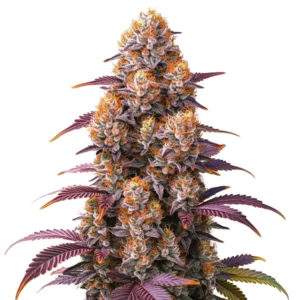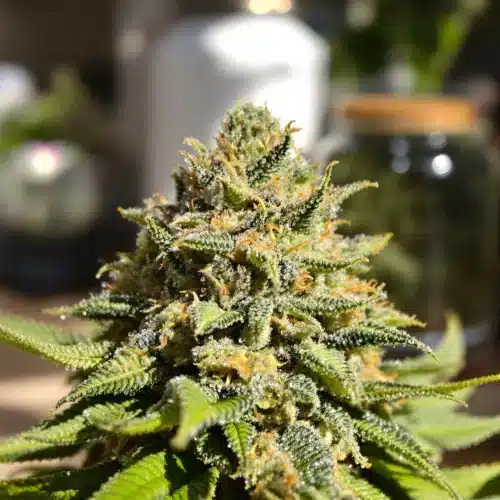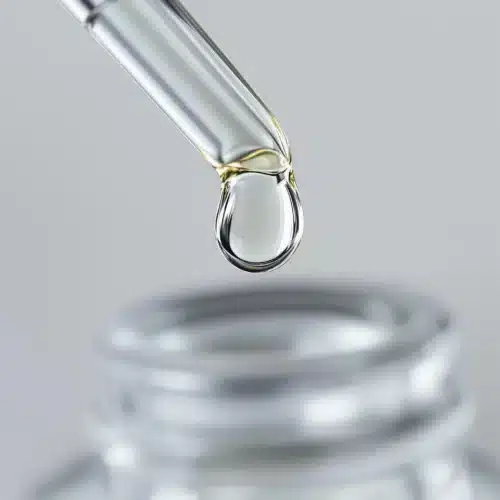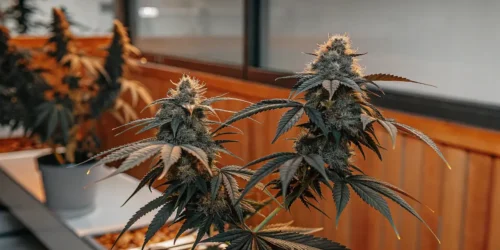What Is Considered Ugly Buds?
In the vibrant world of cannabis growing, growers and enthusiasts often find themselves captivated by the myriad characteristics that define high-quality buds.
From the vibrant colors and enticing aromas to the dense structure and frosty trichomes, cannabis buds can be a feast for the senses. However, not all buds are created equal.

Some might not meet the aesthetic standards typically associated with premium cannabis, leading to the label “ugly buds.” Despite their less-than-perfect appearance, these buds can still pack a potent punch and deliver an exceptional experience.
Knowing what differentiates an ‘ugly’ bud from a high-quality one is essential for both growers aiming to improve their crop and consumers seeking to make informed choices.
This guide delves into the visual aspects, growing conditions, and other factors that contribute to the appearance and quality of cannabis buds, offering insights into how even the ugliest buds can sometimes be the most potent.
Promos & Deals
Ugly Buds: Visual Aspects of Cannabis Buds
Color
High-quality cannabis buds exhibit vibrant shades of green with additional hues like purple or orange. Bright pistils indicate freshness and good plant health, while a deep green suggests efficient photosynthesis and well-nourished plants.
In contrast, ugly buds often display dull or uneven colors such as yellow, brown, or gray. These colors can indicate nutritional deficiencies, water stress, or substrate pH problems.
Proper coloration is crucial for assessing the overall health and quality of cannabis buds. Healthy plants that receive adequate light and nutrients will typically have vivid colors that signify their robust condition.
Shape
The shape of cannabis buds can significantly influence their perceived quality. High-quality buds have a well-defined, typically conical, and compact form. Uniformity in shape often indicates healthy growth and good pruning practices.
Ugly buds, on the other hand, tend to have irregular shapes with bumps and depressions. These irregularities can result from poor pruning techniques or genetic issues.
The consistency in the shape of buds is a visual cue for determining the care and quality of cultivation. Proper shaping and pruning can enhance the overall appearance and ensure even light distribution, promoting better growth.
Density
Density is another critical factor in assessing cannabis buds. High-quality buds are dense and heavy. When pressed, they feel solid, indicating robust development.
This density results from adequate lighting, proper nutrition, and optimal growing conditions.
In contrast, ugly buds are often light and fluffy, easily crushed, suggesting underdevelopment due to inadequate lighting or poor ventilation.
Density directly affects the bud’s potency and overall experience, making it a vital aspect of quality evaluation. Dense buds generally contain more cannabinoids and terpenes, enhancing both potency and flavor.
Presence of Trichomes
Trichomes are tiny, crystal-like structures that cover the surface of cannabis buds. High-quality buds are coated with visible trichomes, giving them a frosty appearance.
Trichomes are essential because they contain the majority of the cannabinoids and terpenes, which determine the potency and flavor of the cannabis.
Ugly buds have few or no visible trichomes, indicating lower resin content and, consequently, less potency. The presence of trichomes is a key indicator of a bud’s quality and effectiveness.
High trichome density suggests that the bud will deliver a stronger and more flavorful experience.
Causes of Ugly Buds
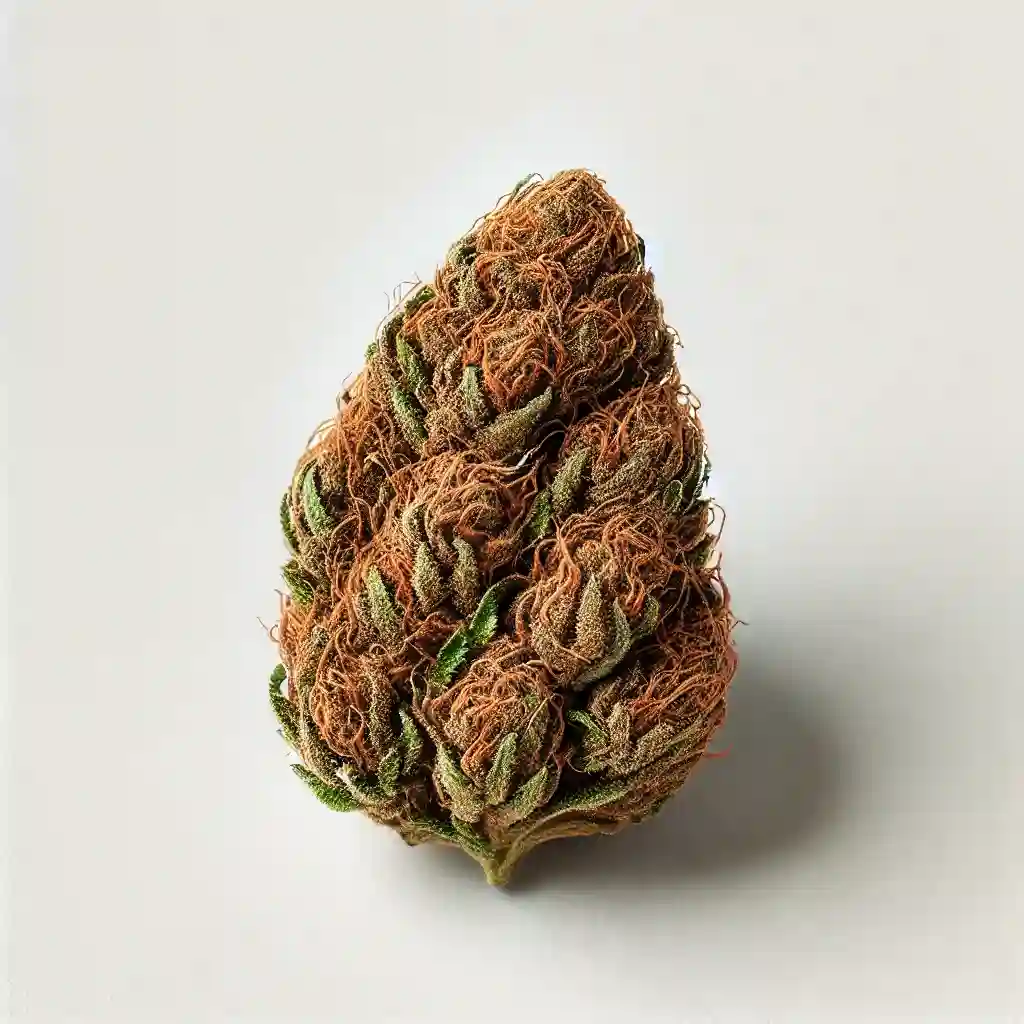
Growing Factors
Lighting
Proper lighting is essential for growing high-quality cannabis buds. Both the type of light and its intensity and duration play crucial roles in plant development.
Types of Light
The types of light used in cannabis cultivation is fundamental to producing high-quality buds. Here, we discuss both natural and artificial lighting methods:
- Natural Light: Sunlight is the best source of illumination, providing the full spectrum needed for growth. Outdoor cultivation in sunny climates can yield highly potent buds. The natural spectrum of sunlight supports all stages of plant growth, promoting vigorous and healthy development.
- Artificial Light: LED, HPS, and CFL are common options. LEDs are efficient and can provide the specific spectrum needed for each growth phase. They are also more energy-efficient and generate less heat, making them suitable for indoor growing environments. HPS lights are known for their intensity and are often used during the flowering phase to enhance bud development, while CFLs are generally used for seedlings and clones due to their lower intensity.
Intensity and Duration
Intensity
Cannabis buds need at least 600-1000 micromoles per square meter per second (µmol/m²/s) of light during the flowering phase. Adequate light intensity ensures proper photosynthesis and robust bud development.
Without sufficient light, plants cannot produce the energy required for dense and potent buds. This intensity level can be achieved using high-quality grow lights such as LED or HPS, which are specifically designed to provide the necessary light spectrum and intensity for cannabis plants.
Duration
The duration of light exposure is also critical. For feminized cannabis plants, the vegetative phase requires 18 hours of light and 6 hours of darkness. This extended light period promotes vigorous growth and prepares the plants for the flowering phase.
During the flowering phase, the light cycle should be adjusted to 12 hours of light and 12 hours of darkness. This change mimics the natural progression of the seasons, signaling the plants to begin flowering and producing buds.
For autoflowering cannabis plants, the light schedule can be simpler. Autoflowers do not rely on light cycles to trigger flowering. Instead, they begin to flower based on their age.
However, providing a consistent 18-24 hours of light throughout their entire life cycle can maximize their growth and bud production. This consistency helps ensure that autoflowers receive all the energy they need to develop fully.
Common Problems in Ugly Buds
Lighting issues can significantly impact bud quality. Here are some common problems:
- Insufficiency: Insufficient light causes less dense buds and poor development. Plants may stretch, leading to weak and airy buds. Lack of adequate light can also result in lower trichome production, reducing the potency of the buds.
- Excess: Excessive light can burn the leaves and buds, reducing overall plant health and yield. Managing light exposure is crucial for maintaining the health and productivity of the plants. Overexposure can lead to light stress, which manifests as bleaching and reduced growth.
Nutrients
Macronutrients
Macronutrients are vital for the healthy growth of cannabis plants. These nutrients include:
- Nitrogen (N): Essential for vegetative growth in cannabis. Deficiency causes yellow leaves. Proper nitrogen levels support healthy leaf and stem development.
- Phosphorus (P): Important in the flowering phase for root and flower development in cannabis. Deficiency causes dark or purple leaves. Adequate phosphorus is crucial for strong root systems and bud formation.
- Potassium (K): Helps in protein synthesis and disease resistance in cannabis. Deficiency causes burnt leaf edges. Potassium supports overall plant health and stress resistance.
Micronutrients
Micronutrients, although needed in smaller amounts, are just as critical for cannabis growth:
- Calcium (Ca): Important for cell development in cannabis. Adequate calcium prevents issues like blossom end rot and supports strong cell walls.
- Magnesium (Mg): Essential for photosynthesis in cannabis. Magnesium deficiency can lead to interveinal chlorosis, affecting the plant’s ability to produce energy.
- Sulfur (S): Necessary for the formation of amino acids and vitamins in cannabis. Sulfur is crucial for metabolic processes and overall plant vitality.
Solutions
Proper nutrient management is essential for growing high-quality cannabis buds. Here are some solutions:
- Balanced Fertilizers: Use cannabis-specific fertilizers that contain a proper balance of macro and micronutrients. These fertilizers are formulated to meet the unique needs of cannabis plants throughout their growth stages.
- pH Adjustment: Maintain the substrate pH between 6.0 and 7.0 for soil, and 5.5 and 6.5 for hydroponics. Proper pH levels ensure nutrient availability and uptake, preventing deficiencies and toxicities.
Temperature and Humidity
Optimal Range
Maintaining the ideal temperature and humidity levels is crucial for cannabis growth:
- Temperature: Between 20-25°C (68-77°F) during the day and 15-20°C (59-68°F) at night. Maintaining this range supports healthy growth and development.
- Humidity: 40-60% during the vegetative phase and 40-50% during the flowering phase. Proper humidity levels prevent mold growth and support transpiration and nutrient uptake.
Common Problems
Temperature and humidity fluctuations can cause several issues:
- High Temperatures: Cause heat stress, leaf burn, and poor development. Heat stress can stunt growth and reduce yield.
- Low Temperatures: Can delay growth and increase susceptibility to diseases. Cold stress can slow down metabolic processes and increase vulnerability to pathogens.
- High Humidity: Promotes mold and mildew growth. Excess humidity creates an environment conducive to fungal infections, which can ruin the crop.
- Low Humidity: Can cause plants to transpire more and dehydrate. Insufficient humidity can lead to dry and brittle plants, affecting overall health.
Solutions
Effective climate control strategies include:
- Climate Control: Use ventilation systems, humidifiers, and dehumidifiers to maintain ideal conditions. Proper climate control ensures a stable growing environment.
- Constant Monitoring: Use thermohygrometers to monitor and adjust conditions. Regular monitoring helps detect and address any environmental issues promptly.
Harvesting and Curing Issues
Harvesting
Optimal Timing
Timing is critical when harvesting cannabis:
- Trichomes: Harvest when trichomes are at their peak development, typically when they are mostly milky with some amber. This timing ensures maximum potency and flavor.
- Pistils: When 70-90% of the pistils have changed color. Changing pistil color indicates the bud’s maturity and readiness for harvest.
Techniques
Proper harvesting techniques include:
- Cutting: Use sterilized pruning scissors to avoid infections. Clean cuts reduce the risk of disease and ensure healthy post-harvest processing.
- Manicuring: Remove large leaves and trim small leaves around the buds. Proper manicuring improves the appearance and quality of the final product.
Drying
Procedure
Drying cannabis buds correctly is essential to preserve their quality:
- Environment: Hang buds in a dark place with good ventilation. Darkness prevents degradation of cannabinoids and terpenes, while good airflow prevents mold growth.
- Duration: 7-14 days, until stems snap easily instead of bending. Proper drying ensures the buds retain their potency and flavor.
Common Problems
Issues that can arise during the drying process include:
- Fast Drying: Can cause brittle buds and loss of terpenes. Rapid drying may degrade essential oils, affecting the overall quality.
- Slow Drying: Can promote mold growth. Slow drying can result in moldy buds, which are unusable and potentially harmful.
Curing
Procedure
Curing is a crucial step that enhances the quality of cannabis buds:
- Containers: Use airtight glass jars. Glass containers prevent air exchange and maintain the buds’ moisture levels.
- Environment: Store in a dark, cool place. Cool, dark storage conditions preserve cannabinoids and terpenes.
- Duration: Cure for at least 2-4 weeks, opening jars daily during the first week for ventilation. Proper curing enhances flavor, aroma, and potency.
Benefits
Benefits of proper curing include:
- Flavor and Aroma Improvement: Curing allows terpenes to fully develop. This process brings out the complex flavors and aromas of the buds.
- Potency: Helps maximize cannabinoid content. Curing converts inactive compounds into active cannabinoids, increasing the bud’s effectiveness.
Impact on Quality
Appearance vs. Potency
Laboratory Analysis
Laboratory testing can provide insights that visual assessments alone cannot:
- THC and CBD Content: Lab analyses can reveal high cannabinoid levels in ugly buds, challenging the perception of low quality. Objective testing can uncover the true potency of the buds.
- Terpene Profile: spray Terpenes play a crucial role in aroma and flavor and can be present in high levels regardless of appearance. A rich terpene profile contributes significantly to the overall experience.
Differences Between Ugly Buds and High-Quality Buds
While visual appeal is important, it does not always correlate with the bud’s potency and effectiveness.
Some ugly buds can have high cannabinoid content and a rich terpene profile, providing a potent and flavorful experience despite their appearance.
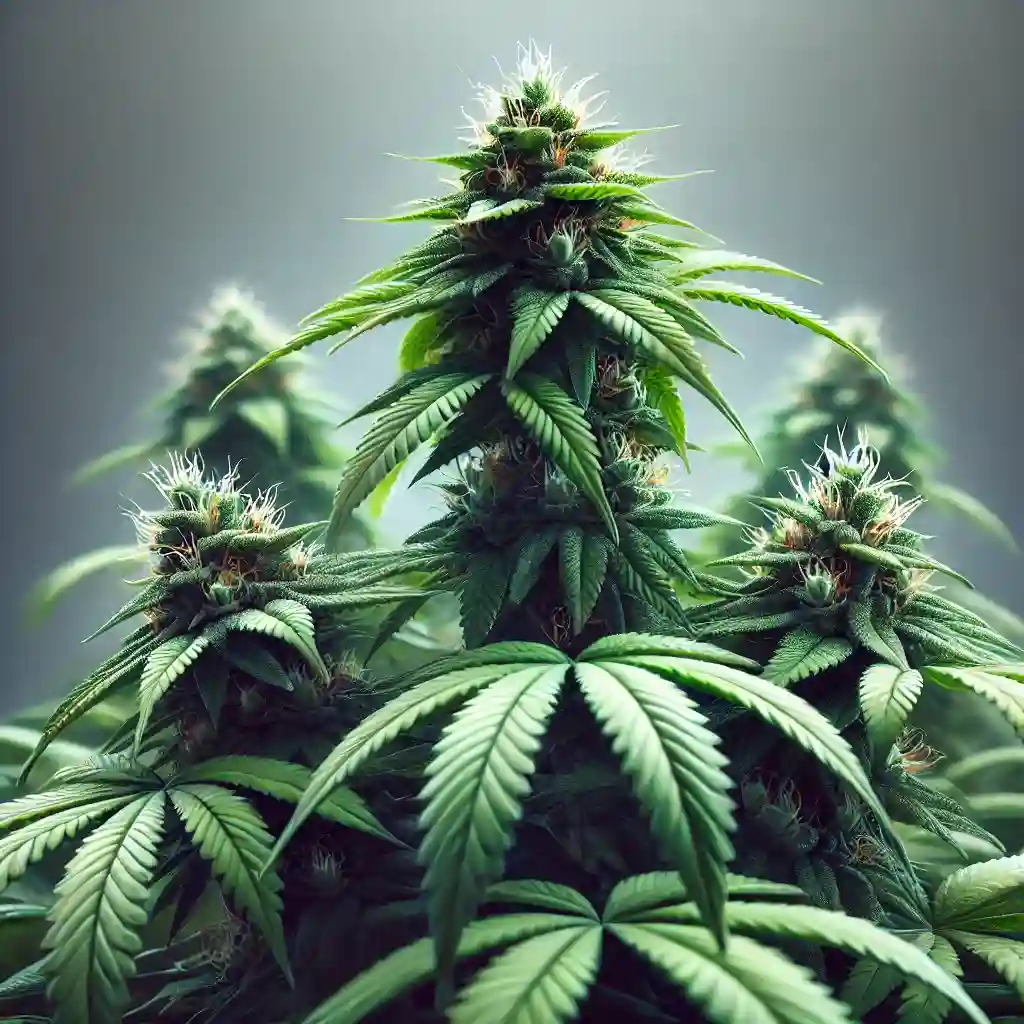
Practical Examples
Some growers and consumers report that certain ugly buds have potent effects and a good terpene profile despite their appearance.
This highlights that visual assessment alone is not always sufficient to judge quality. Practical experience and lab testing can provide a more accurate measure of a bud’s true value.
Top 10 Strains
1. Fat Bastard Strain
Fat Bastard Strain is a heavy-hitting indica dominant hybrid known for its potent effects and massive yields.
It features dense, resinous buds with a pungent aroma that combines earthy and citrus notes. This strain delivers a strong body high, making it ideal for relaxation and pain relief.
2. Bubble Gum Sherb Strain
Bubble Gum Sherb Strain is a delightful hybrid that blends the sweet, fruity flavors of Bubble Gum with the creamy, tangy undertones of Sherbert.
Its buds are dense and covered in trichomes, providing a balanced high that is both euphoric and relaxing. This strain is perfect for social gatherings or unwinding after a long day.
3. Cafe Racer Autoflower
Cafe Racer Autoflower combines the genetics of Girl Scout Cookies and Granddaddy Purple, resulting in a potent, easy-to-grow strain.
This autoflowering variant produces dense, trichome-laden buds with a sweet, earthy aroma. It offers a powerful, uplifting high with a relaxing body buzz, making it a favorite among both novice and experienced growers.
4. Blackberry Moonrocks Strain
Blackberry Moonrocks Strain is a unique indica dominant hybrid known for its high THC content and stunning appearance. The buds are dense and dark purple, covered in a layer of trichomes that give them a frosty look.
This strain delivers a powerful, long-lasting high that is both euphoric and deeply relaxing, perfect for evening use.
5. Future #1
Future #1 is a groundbreaking hybrid strain with extremely high THC levels, often exceeding 30%. It boasts a sweet, fruity aroma with hints of pineapple and citrus.
The buds are dense and covered in sticky trichomes, delivering a potent cerebral high that enhances creativity and focus, followed by a relaxing body effect.
6. Permanent Marker Strain
Permanent Marker Strain is a balanced hybrid known for its unique terpene profile and potent effects. The buds are dense and coated with trichomes, emitting a strong aroma of pine and earth with hints of diesel.
It provides a powerful, long-lasting high that is both euphoric and relaxing, making it suitable for both recreational and medicinal use.
7. Godfather OG Seeds
Godfather OG is often referred to as the “Don of All OGs” due to its incredibly potent effects. This indica dominant strain features dense, trichome-rich buds with a pungent, earthy aroma. It delivers a heavy, sedative high that is perfect for evening use, providing relief from stress, pain, and insomnia.
8. Permanent Marker Auto
Permanent Marker Auto is the autoflowering version of the popular Permanent Marker strain. It retains the same potent effects and unique terpene profile while offering the convenience and rapid growth cycle of autoflowers.
The buds are dense and frosty, delivering a strong, balanced high that is both euphoric and calming.
9. Motor Breath Strain
Motor Breath Strain is a powerful indica dominant hybrid known for its diesel-like aroma and potent effects. The buds are dense and sticky, covered in a thick layer of trichomes.
This strain delivers a heavy, relaxing high that is perfect for unwinding after a long day, providing relief from stress and pain.
10. Purple Lemonade Auto Seeds
Purple Lemonade Auto is an eye-catching autoflowering strain with vibrant purple buds and a sweet, citrusy aroma. It combines the genetics of Purple Lemonade and an autoflowering cultivar, resulting in a fast-growing plant with high yields.
The effects are uplifting and euphoric, making it a great choice for daytime use.
FAQs
What are ugly buds?
Ugly buds refer to cannabis buds that do not meet the aesthetic standards typically associated with premium cannabis. They might have dull colors, irregular shapes, low density, or few trichomes but can still be potent and effective.
Why do my buds look weird?
Buds can look weird due to various factors including insufficient or excessive light, nutrient deficiencies, improper pruning, or environmental stress. Ensuring optimal growing conditions can help improve the appearance of your buds.
How to grow big buds and avoid ugly buds?
To grow big, high-quality buds, provide adequate lighting, balanced nutrients, and proper pruning. Maintain optimal temperature and humidity levels, and ensure proper drying and curing techniques post-harvest.
What is the best fertilizer for big buds?
The best fertilizer for big buds is a cannabis-specific fertilizer that provides a balanced mix of macro and micronutrients. Look for fertilizers high in phosphorus and potassium during the flowering phase to support bud development.
How can I make my buds look better?
To improve the appearance of your buds, ensure they receive adequate light, proper nutrition, and optimal growing conditions. Prune plants correctly and manage environmental factors like temperature and humidity carefully. Proper drying and curing are also crucial.
How to avoid getting ugly buds?
To avoid ugly buds, focus on providing consistent light, balanced nutrients, and proper environmental conditions. Regularly monitor and adjust pH levels, prune effectively, and ensure your plants are free from pests and diseases.
How big should buds be at 5 weeks?
At 5 weeks into the flowering phase, buds should be forming and beginning to swell, showing a good density of pistils and initial trichome development. The size can vary based on the strain and growing conditions.
Why are my buds fluffy and not dense?
Fluffy, airy buds can result from insufficient light, poor nutrition, high temperatures, or high humidity during the flowering phase. Ensuring optimal growing conditions and providing adequate light can help produce denser buds.

